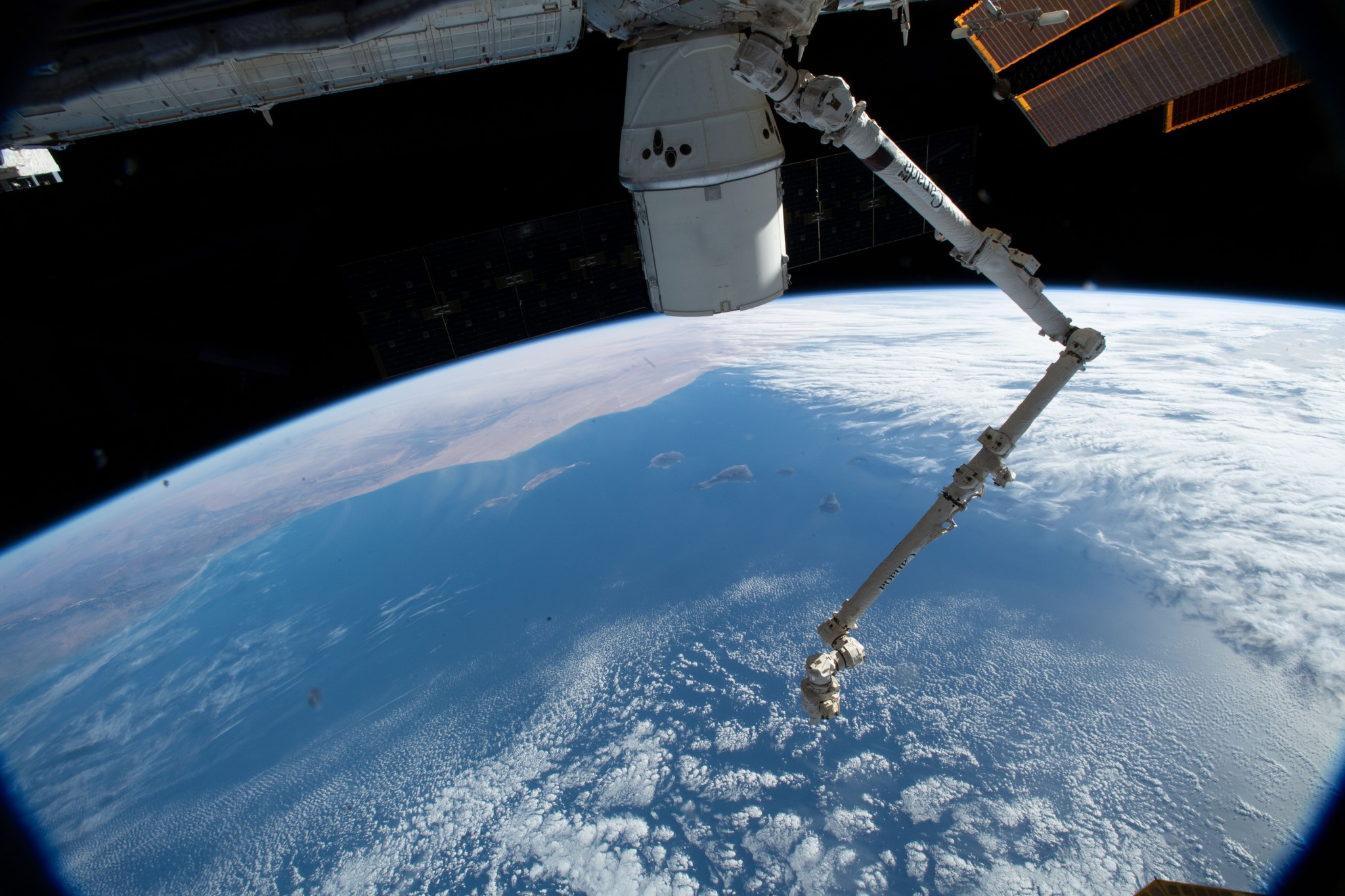In 2022, the White House reignited the Cancer Moonshot, an ambitious effort to reduce the cancer death rate by at least 50 percent over the next 25 years and improve the experience of people and families living with and surviving cancer. In addition to programs, policies, and resources, the Moonshot includes the first-ever Cancer Cabinet. More than 20 departments, agencies, and White House components make up this Cabinet, including NASA.
Scientists with NASA’s Human Research Program, which focuses on predicting and managing radiation risks associated with human spaceflight, are supporting this effort. The program’s contributions to cancer studies so far include exploring strategies to protect against space radiation exposure and identifying potential biomarkers for early detection of the disease. This work is conducted in laboratories, ground-based analogs, and the International Space Station.
The space station provides a unique advantage – the microgravity environment – for studies seeking to better understand and treat many different types of cancers. A detailed look at the early decades of cancer research in space highlighted the benefits of microgravity: cells grow into 3D forms that behave much as they do in the body, cell growth and function such as gene expression and cell signaling are different, and cell cultures experience lack of sedimentation and reduced fluid shear1. These conditions make it possible to study mechanisms and pathways that control growth and function of cancer-related cells in ways that are not possible on Earth.
Tissue chips are one important tool for cancer research on the space station. These 3D cultures of specific types of human cells mimic the complex biological functions of specific organs in the body. They make it possible to test how those cells respond to stresses, drugs, and genetic changes. For example, scientists can expose a tissue chip to radiation and look for patterns in how the cells respond. Those patterns provide hints about how a specific person’s genetic makeup might make them susceptible to different cancers so that appropriate medical strategies can be employed.
Protein crystal growth (PCG) is another major area of cancer-related study in microgravity. The NanoRacks-PCG Therapeutic Discovery and On-Orbit Crystals investigations, for example, made advances in research on leukemia, breast cancer, and skin cancers. Protein crystals grown in microgravity produce larger, better-organized crystals that researchers can use to determine structural details that guide the development of targeted treatments.
Another PCG experiment looked at the KRAS gene. Mutations of this gene drive 30 to 40% of all cancers, including about 95% of pancreatic cancers.
CASIS PCG 17, an investigation sponsored by the ISS National Lab and developed by the Frederick National Lab, crystallized mutated KRAS proteins on the space station. As expected, the crystals were of much higher quality than those grown on the ground and researchers could see detailed structure in the protein’s ball-shaped core. Determining the detailed structure of the full protein could support design of drugs that bind to it and block its cancer-causing function.
Robotic technology created for the space station has inspired tools used in surgical treatment of cancers on the ground. A robotic surgical assistant created for the treatment of brain tumors used technology adapted from Canadarm, Canadarm2, and Dextre, three space station robotic tools developed by CSA (Canadian Space Agency) 2. Surgeons can use the robotic assistant to operate inside an MRI since it is free of magnetic metals, and the tool’s tremor-free aid offers a high level of dexterity and a sense of touch to surgeons performing delicate procedures.
An ESA (European Space Agency) experiment, Endothelial Cells, examined how cultured endothelial cells react to spaceflight. Endothelial cells provide the blood supply that tumors need to grow. Researchers created special culturing hardware for the investigation and examined its performance in space for use by other biomedical experiments3.
Endothelial cells grown on the ground don’t live very long, so Angiex Cancer Therapy scientists tested whether cultures of these cells grow better in space. The investigation sponsor, Angiex, Inc., of Cambridge, Massachusetts, developed a treatment that targets endothelial cells, based on the theory that depriving cancer cells of the oxygen and nutrients these cells provide is a way to kill tumors. The therapy showed promise in mice, but no adequate model exists to test drug toxicity in living human cells. Microgravity cell cultures came to the rescue once again, providing the researchers with a model more representative of conditions in the human body so they could evaluate the vascular-targeted drug and its toxicity before starting clinical trials.
This type of research could significantly reduce the cost of drug development and medicines. More than half of new drug candidates fail at the preclinical or clinical trial testing phase, and economic models suggest that just a 10% improvement in failure prediction rates prior to trials could save $100 million in development costs per drug.
Cancer has touched the lives of almost everyone. Research on the space station makes significant contributions to protecting people on Earth through the Cancer Moonshot.
Melissa Gaskill
International Space Station Program Science Office
Johnson Space Center
Citations
1 Becker, J., Souza, G. Using space-based investigations to inform cancer research on Earth. Nat Rev Cancer. 2013; 13: 315–327. https://doi.org/10.1038/nrc3507
2 Sutherland GR, Lama S, Gan LS, Wolfsberger S, Zareinia K. Merging machines with microsurgery: clinical experience with neuroArm. Journal of Neurosurgery. 2013; 118(3): 521-529. https://doi.org/10.3171/2012.11.JNS12877
3 Cazzaniga A, Moscheni C, Maier JA, Castiglioni S. Culture of human cells in experimental units for spaceflight impacts on their behavior. Experimental Biology and Medicine. 2017;242(10):1072-1078. https://doi.org/10.1177/1535370216684039
Learn More
NASA Scientists Join White House Cancer Initiative
Fact Sheet: President Biden Reignites Cancer Moonshot to End Cancer as We Know It
Space Station Leads to Breakthroughs in Human Health on Earth
































